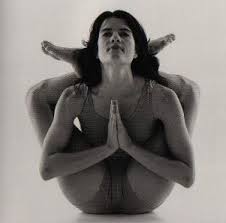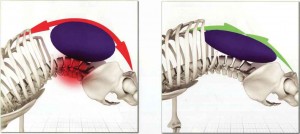Should you do backbends and forward bends one right after the other? When I first started doing yoga this was considered to be verboten.
Then I found myself in a class with Dharma Mitra on 23rd St in Manhattan and we were doing full wheel followed quickly by putting both feet behind our heads; and then full wheel again—and walk the hands in closer; then feet behind the head; and then full wheel. Five times! And it felt great.
This was one of my eye-opening yoga moments where I began to question a lot of the conventional wisdom that has been baked into the practice.
These days I am happy to teach some version of a crunch followed by any sort of a backbend. In class, I like to say that backbends are sit-ups which, while counterintuitive, can help with understanding the nature of the pose.
For one, backbends are not meant to bend the body, they are spinal extensions no matter how deeply you go in them. Sure the spine is going to bend but it has to do so through a balanced extension of the front and back of the body.
To this end, when doing wheel pose for example, students need to shorten the front of the body, specifically the rectus abdominis, or sit-ups, muscle.
This muscle needs proper tone if the spine is to truly extend into the pose.
If we lack tone in the rectus abdominis there is little incentive for the lower spine to extend from the back of the body.
Most people are too long in the front of the body and too short in the back.
The goal of my walking program is to reverse this pattern because while you might do yoga daily, learning to walk correctly can bring amazing and permanent change to the patterns we employ all day every day.
***



